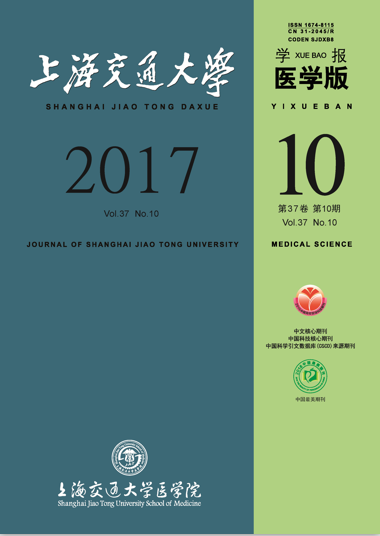|
|
HBV-induced metabolic changes in HepG2 human hepatoma cells revealed by gas chromatographymass spectrometry#br#
LI Jing-chen, WAN Qian-fen, GAN Miao-yan, TANG Hui-ru
2017, 37 (10):
1322.
doi: 10.3969/j.issn.1674-8115.2017.10.002?
Objective · To investigate the impacts of hepatitis B virus (HBV) infection on the metabolomic phenotype of HepG2 human hepatoma cells. Methods · With gas chromatography-mass spectrometry (GC-MS), metabolite composition of HepG2 and HepG2.2.15 cells (derived from HepG2 cells transfected with a plasmid containing HBV) were analysed. Results · GC-MS analysis mainly found 34 metabolites in both HepG2 and HepG2.2.15 cells, including glycine (Gly), alanine (Ala), valine (Val), leucine (Leu), isoleucine (Ile), proline (Pro), serine (Ser), threonine (Thr), methionine (Met), cysteine (Cys), cystine, aspartic acid (Asp), glutamic acid (Glu), pyroglutamic acid, phenylalanine (Phe), tyrosine (Tyr), tryptophan (Trp), hypoxanthine, uracil, myo-inositol, lactic acid, succinic acid, linoleic acid, linolenic acid, palmitic acid, stearic acid, urea, cholesterol, etc. These metabolites were involved in multiple metabolic pathways including glycolysis and metabolism of fatty acids, amino acids, purines and pyrimidines. Compared with HepG2 cells, HepG2.2.15 cells had significantly higher levels in lactic acid, linolenic acid, Ala and Cys, but lower levels in Leu, Ile, Val, Phe, Met, Trp, Pro, Tyr, myoinositol and uracil. Conclusion · HBV infection dysregulates the metabolism of amino acids and fatty acids in hepatocytes. GC-MS analysis provides complimentary information about HBV-induced metabolic changes of host cells.
Related Articles |
Metrics
|

